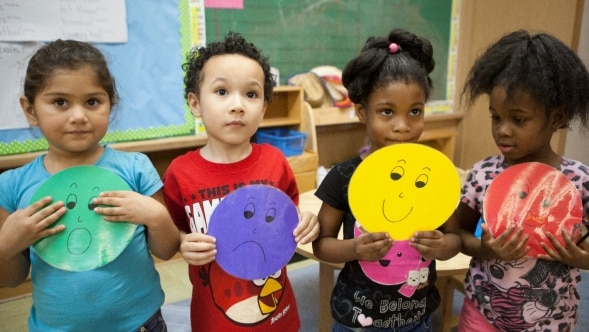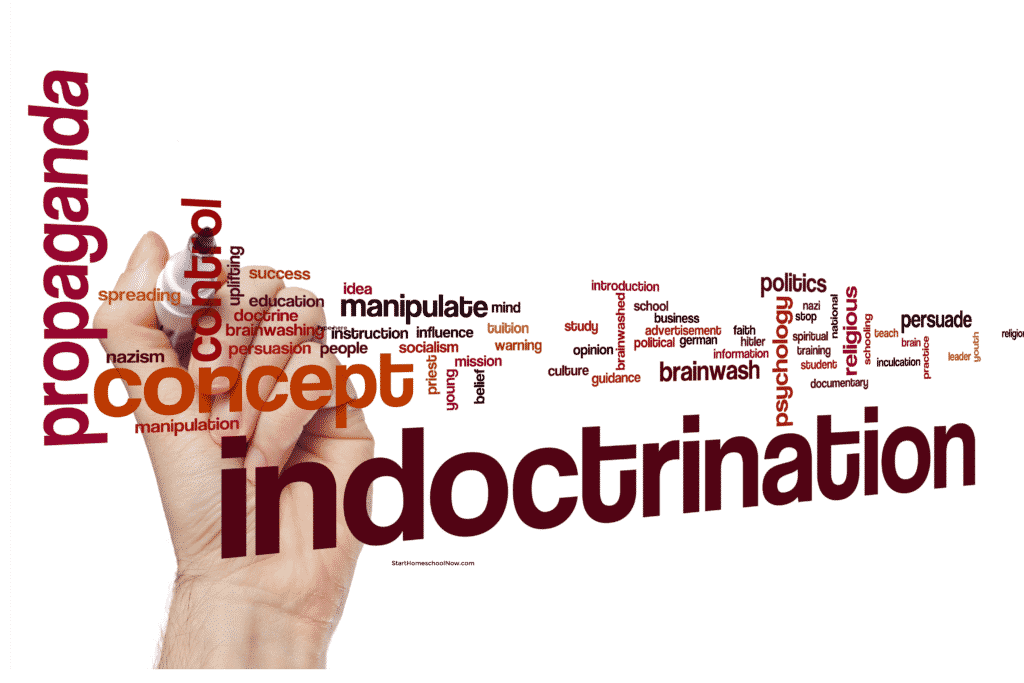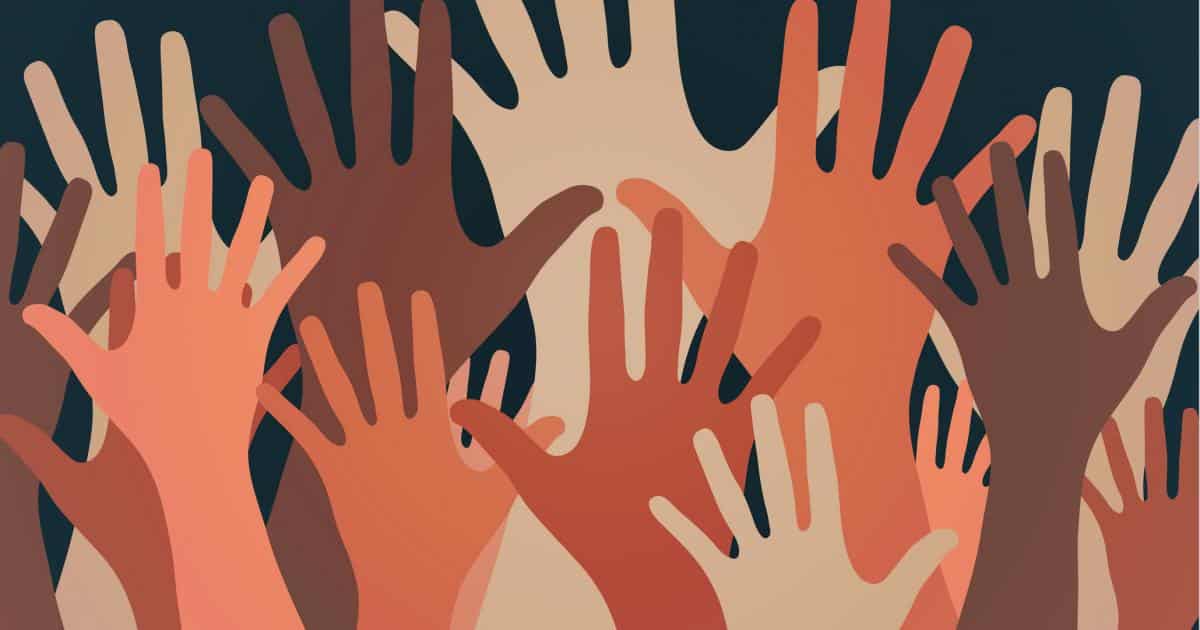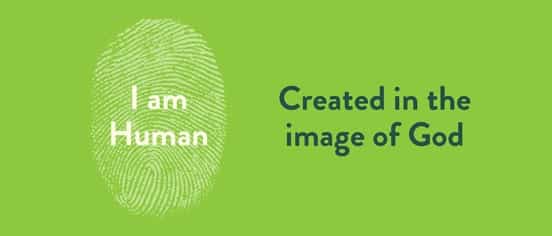The Tipping Point: Critical Race Theory and its Gateway, Social Emotional Learning
By Raul Zavaleta – August 2021

INTRODUCTION
Students as young as five years old are being instructed in the tenets of an ideology that casts American society as a power competition between racial groups.
Parental and governmental protests against Critical Race Theory have increased lately. Its supporters defend it by trying to confuse us. They say since we don’t know what Critical Race Theory is, how can we struggle against it?
Slate, a left-wing magazine, tweeted last month, “Conservatives want to cancel Critical Race Theory. But they don’t know what it is.” They’re defending it by making us question our understanding and making us doubt the evidence of what we see and hear.
We know very well what Critical Race Theory is. It’s not a theory; it stigmatizes white people as irredeemably racist and privileged, and black people as systematically oppressed.
A year ago, in a presentation about Cultural Marxism, I asked the question “Have we reached the tipping point when a “quiet” revolution that has been taking over the culture of our society over many years is finally seeing success?”
Today I can tell you the answer is yes as Critical Race Theory is being inculcated in government, universities, big business, and schools across our nation.
Today, I want to share with you the origins of this divisive ideology, how it has invaded America, the effect is having on our educational system, and what we can do to defend against it.
WHAT IS CRITICAL RACE THEORY?
Let’s begin with defining what it is.
Much has been written about Critical Race Theory, mostly as academic doublespeak. In simple terms, the tenets of Critical Race Theory are the following:
- Racism is normal, it’s everywhere, and it’s unavoidable. Everything is racist. Racism is not the result of individual, conscious racist actions or thoughts: it is systemic.
- White people are born with an unearned privilege that other Americans are denied. This “privilege” prevents whites from working with blacks to change the economic system. White people only take action against racism if it benefits them.
- The System is rigged in favor of Whites. The criteria to measure merit and success in school or the workplace are designed to keep white individuals on top; non-whites can’t win. The current ideas of equality, legal reasoning, enlightened rationalism, and the scientific method are wrong.
- Race Drives Beliefs and Behaviors. Knowledge is socially constructed and it excludes the experiential knowledge of non-white races. American culture is a conspiracy to perpetuate white supremacy by imposing white concepts on people of other races. Assimilation requires members of minority groups to forego their cultural habits.
- Equity Replaces Equality. “Equality” means equal treatment of all Americans under the law. Critical Race Theory’s “equity” demands that the government treat individual Americans unequally according to skin color to force equal outcomes.
Critical Race Theory supporters view Martin Luther King Jr. as a naïve, idealistic dreamer. According to them, his chosen path was nonsense because there is no possible way to “be judged according to the content of your character, and not the color of your skin.”
Why? Because Critical Race Theory is a revolutionary movement wishing to transform America from its idealistic founding. It fundamentally teaches that the very structure of society is systemically oppressive to minority populations and that racism is built into the very fabric of social life. They believe that even if these racist policies, practices, or actions are ‘removed’ or ‘rectified,’ racism still exists—it is simply manifested in new ways.
Critical Race Theory demands that Americans dismantle laws, traditions, norms, institutions, and free-market enterprise— the entire American system itself. Only then, Critical Race Theory concludes, racism in all its forms – in society, government, church, and family – can be eradicated.
HOW DID WE GET HERE? WHAT ARE THE ORIGINS OF CRITICAL RACE THEORY?
Critical Race Theory is a combination of older ideas some of them intertwined with the origins of Cultural Marxism, which I discussed in a previous presentation.
The Institute for Social Research at Goethe University Frankfurt during the early 1900s was created by Friedrich Pollock and Felix Weil. Its first director was Carl Grunberg, a professor of political law and economy at the University of Vienna. All of them were neo-Marxists, but, while they agreed with Marx, felt Marxism had gaps that required development and explanation. The Institute (now commonly referred to as The Frankfurt School) was formed with the vision of filling in those conceptual gaps.
The Frankfurt School, under the direction of Carl Grunberg, was heavily influenced by Gustav Von Schmoller, a German economist.
For Schmoller, economic theory required consideration of all potential factors that could affect economic activity. He wrote that economic behavior is embedded in a cultural style specific to the time and that economic life cannot be understood without knowledge of the historical development of customs, laws, and morals.
Schmoller advocated for social reforms in the name of social justice that aligned with his economic theory. He believed political economy worked best when it was focused on the psychology of economic action.
The Frankfurt School gave birth to Critical Theory based on a mixture of Schmoller’s psychology of economics and Marxism, where Marxism is the structure and economic psychology is the object.
In the early 1960s Critical Legal Studies Theory—the combination of race relations and the study of the law – was being advocated to deal with the race issues of the time. Harvard Law professor Derrick Bell, the first black law professor to receive tenure at Harvard, became, by pushing this new theory, the founder of Critical Race Theory. His ideas and works are largely derived from the work of W.E.B. Du Bois 65 years earlier.
Du Bois was influenced by the Frankfurt School, after studying in Germany for 2 years, and most specifically the work of Gustav von Schmoller, the same person who had influenced Grunberg at the Frankfurt School on forming his Critical Theory.
W.E. B. Du Bois’ work on the influence of racism in American economic and political life was based on Schmoller’s ideas about the psychology of economics.
Both Du Bois and Grunberg believed in a worldview that categorized everyone as either oppressor or oppressed. Du Bois critiqued society using race as a frame of reference while Grunberg used social class.
So it was that Marxist scholars in America simply adapted their revolutionary theory to the social and racial unrest of the 1960s substituting race for class and set out to create a revolutionary coalition of the dispossessed based on racial and ethnic categories.
Critical Race Theory takes a page from the Marxist book dividing our society into Oppressor and Oppressed only this time, instead of class, race is the differentiator.
A formidable opponent of this view was the Civil Rights movement, which pursued the fulfillment of the American promise of freedom and equality. Despite the success of the Civil Rights Movement, culminating with the enactment of the Civil Rights Act, Marxist intellectuals proved resilient and continued to push their vision in our institutions of higher learning eventually infiltrating our entire educational system.
Knowing that its true purpose would be a hard sell, the supporters of Critical Race Theory over the years have used several euphemisms to disguise it. At various points, you have heard calls for “equity,” “social justice,” “diversity and inclusion,” “social emotional learning,” and “culturally responsive teaching” as solutions to our social problems.
SOCIAL EMOTIONAL LEARNING
You have heard the educators deny they are using Critical Race Theory, and call their pedagogy Social Emotional Learning.
According to the Collaborative for Academic, Social and Emotional Learning (CASEL)—the main vendor and authority of SEL curricula in pre-K and K-12 education—SEL is “the process through which all young people and adults acquire and apply the knowledge, skills, and attitudes to develop healthy identities, manage emotions and achieve personal and collective goals, feel and show empathy for others, establish and maintain supportive relationships, and make responsible and caring decisions.”
Based on this principle, proponents of SEL call for focusing less on academic content and knowledge in schools and more on cultivating students’ attributes, mindsets, values, and behaviors.
SEL activists tell parents their product is a transformational tool that will stimulate greater academic achievement and personal fulfillment for students.
Many academic experts, however, argue that the evidence supporting these claims is shallow and that SEL presents tremendous risks to students’ psychological development, violates student privacy by collecting personal data (often without parental consent), and seeks to mold children into the type of human being the government deems most useful to the economy, society, and the state.
Do parents disagree with their children being responsible, empathetic, and emotionally mature? No, of course not. Parents typically view themselves as the primary moral educators of their children. Those values are taught by family and religion. Parents expect public schools to teach their kids basic academic disciplines like math, English, history, and science.
SEL attempts to replace family and religion with a government-endorsed morality curriculum with the ultimate objective of filling the void of secularism in public schools. That, my friends, is indoctrination.
WHAT IS THE CONNECTION BETWEEN SEL AND CRITICAL RACE THEORY?
The SEL framework states that “Social and emotional learning and educational equity … exist in a symbiotic relationship” and explains the SEL Core Competencies “through an equity lens.”
Note the change from equality to equity, one of the tenets of Critical Race Theory.
Whereas equality means treating people the same, equity means social engineering to favor supposedly aggrieved minorities. In other words, equity means treating some people better than others depending on the level of oppression they claim for themselves based on their skin color or gender.
The CASEL resource “Equity & Social Emotional Learning: A Cultural Analysis,” argues for “making explicit issues such as power, privilege, prejudice, discrimination, [and] social justice . . . in the field of SEL” to attain “equitable outcomes in education” and the core competency of “self-awareness”, which it defines as “recognizing the many factors influencing equity in the social context including power dynamics, cultural demands, race, class, and privilege.” This is another tenet of Critical Race Theory.
In a June 2020 webinar titled “SEL as a lever for Equity and Social Justice,” CASEL’s president and CEO, Karen Niemi, advocated that SEL should be used to favor certain students over others primarily because of their race. The CEO concluded, “We see SEL as a tool for anti-racism.”
Anti-racism was coined by Ibram X. Kendi, author of How To Be An Antiracist, as the idea that racism is a white problem.
CULTURALLY RELEVANT TEACHING
Other popular forms of anti-racism indoctrination are culturally relevant education models. The pedagogy of Cultural Relevant Teaching was made popular by Dr. Gloria Ladson-Billings in the early 1990s. She defined it as something “that empowers students to maintain cultural integrity while succeeding academically”. (Remember that Race drives beliefs and behaviors is another tenet of Critical Race Theory)
The theory surrounding culturally relevant teaching argues that there are gaps in academic achievement between mainstream culture and immigrants or ethnic cultural groups and that education should be adapted to “match the cultures students bring with them from home”.
That sounds good, but as Ladson-Billings has acknowledged in two articles that “Cultural Relevant Pedagogy and Critical Race Theory operate in parallel to resist the assimilation of communities of color into a system of schooling which renders as normative a vast unconscious racism.” Another tenet: Systemic Racism.
THE EFFECT OF THESE EDUCATION MODELS
Christopher Ruffo is the founder and director of Battlefront, a public policy research center. He is also a journalist and over the last year has researched and written many articles covering Critical Race Theory in education.
In a recent speech he summarized some of the pervasive effects of Critical Race Theory he has found in his research:
- In Cupertino, California, an elementary school forced first-graders to deconstruct their racial and sexual identities, and rank themselves according to their “power and privilege.”
- In Springfield, Missouri, a middle school forced teachers to locate themselves on an “oppression matrix,” based on the idea that straight, white, English-speaking, Christian males are members of the oppressor class and must atone for their privilege and “covert white supremacy.”
- In Philadelphia, an elementary school forced fifth-graders to celebrate “Black communism” and simulate a Black Power rally to free 1960s radical Angela Davis from prison, where she had once been held on charges of murder.
- And in Seattle, the school district told white teachers that they are guilty of “spirit murder” against black children and must “bankrupt [their] privilege in acknowledgment of [their] thieved inheritance.”
And these are not isolated stories, Ruffo claims that he has developed a database of more than 1,000 of these stories. He continues:
When I say that Critical Race Theory is becoming the operating ideology of our public institutions, it is not an exaggeration—from the universities to bureaucracies to k-12 school systems, Critical Race Theory has permeated the collective intelligence and decision-making process of American government, with no sign of slowing down.
This is a revolutionary change. When originally established, these government institutions were presented as neutral, technocratic, and oriented towards broadly-held perceptions of the public good. Today, under the increasing sway of Critical Race Theory and related ideologies, they are being turned against the American people. This isn’t limited to the permanent bureaucracy in Washington, D.C., but is true as well of institutions in the states, even in red states, and it is spreading to county public health departments, small Midwestern school districts, and more. This ideology will not stop until it has devoured all of our institutions.
Frederick Hess, an American Enterprise Institute scholar explains it this way, “Much of what passes for anti-racist education is a poisonous exercise in caricature and rank bigotry. … What anti-racists mean by ‘education’ is something more typically understood as indoctrination.”’

Indeed, indoctrination is the central goal of Critical Race Theory, and the pedagogies of Social Emotional Learning, and Cultural Responsive Teaching by which students must be taught to adopt the right attitudes and behaviors to become “change agents,” or activists for “social justice.”
Think about what our children are being taught. They are learning that if they are white they are oppressors and if they are of any other color they are oppressed. They are also being taught that there is no resolution to this problem.
Critical Race Theory is incredibly disempowering. White children are told “We have a problem. You are the problem, and there is no way to fix it. You’ll never be able to do enough to repair the damage that you perpetuate simply by existing.” Consider what havoc this is likely to wreak on young minds.
On the other hand, children who are placed in the ‘oppressed’ category are told that the system is rigged against them. In such a situation, why should a child make any attempt to succeed?
Now, consider that there are many children in schools that are a mix of many races, in what group do they belong? The “oppressor” or the “oppressed”?
When I look at my ethnic background, it is hard to determine my ethnicity. I was born in El Salvador to a mother whose father was Italian and a mixed-race mother and a father who traces his roots to the Basque region of Spain. I married Debbie who comes from a father of English/German background and a mother from Armenian background. What race are my children? Who decides?
In 2020, 17% of marriages in the United States were of mixed race. How will their children and my children and their children’s children fit into Critical Race Theory structure?

ARE THESE PEDAGOGIES CONSISTENT WITH CHRISTIANITY?
Because of its Marxist foundation, Critical Race Theory is atheist. As such, it cannot be reconciled with what the Bible teaches about sin and salvation.
First, to view all relationships in terms of power dynamics requires that people be seen in terms of the powerful (privileged, oppressors) and the powerless (marginalized, oppressed). This way of viewing the world fails to evaluate people as creatures made in the image of their Creator.
Second, if the main problem for “people of color” is that they are inevitably oppressed by inherently oppressive structures, then the only solution is to tear down those structures in the pursuit of justice. This way of thinking denies what has been revealed in the Bible that all of us have sinned against the holy God who created us. This is true for people in any and every category—whether oppressed or oppressor, victim or victimizer, marginalized or privileged.
Third, Critical Race Theory promotes ethnic discrimination. Ibram X. Kendi wrote:
“The only remedy to racist discrimination is anti-racist discrimination. The only remedy to past discrimination is present discrimination. The only remedy to present discrimination is future discrimination.”
It is a never-ending discrimination cycle. And Kendi is not alone in discriminating against white people. Chanequa Walker-Barnes, a self-proclaimed “public theologian and ecumenical minister” wrote this prayer in her book, A Rhythm of Prayer: A Collection of Meditations for Renewal:
“Dear God, Please help me to hate White people. Or at least want to hate them. At least, I want to stop caring about them, individually and collectively. I want to stop caring about their misguided, racist souls, to stop believing that they can be better, that they can stop being racist.”
Would our God answer such a prayer? Unlike Critical Race Theory, Christ unites people from different backgrounds. He does not divide and discriminate. Speaking about the traditional animosity between Jews and Gentiles, the Apostle Paul wrote:
“There is neither Jew nor Greek, there is neither slave nor free, there is no male and female, for you are all one in Christ Jesus” (Galatians 3:28).

HOW DO WE FIGHT BACK?
I hope I have established how poisonous this ideology is and that we must fight back.
Ruffo claims there are four main reasons why the resistance to adoption of Critical Race Theory has been ineffective so far:
First, many Americans are afraid to speak out about social and political issues, especially race, for fear of getting mobbed in social media or fear of losing their jobs. With our collective silence, we have enabled the institutions to become hostile to opposing opinions which they police and punish.
Second, Critical Race Theory supporters aggressively accuse anyone who disagrees as reacting out of guilt and shame forcing them to accept their “complicity in white supremacy.”
Third, Americans across the political spectrum have failed to separate the premise of Critical Race Theory from its conclusion. The premise that American history includes slavery and other injustices, and that we should examine and learn from that history is undeniable. But the conclusion that America was founded on and defined by racism and that our founding principles, our Constitution, and our way of life should be overthrown does not follow.
And fourth, those who have spoken against Critical Race Theory have addressed it on the theoretical level, pointing out the theory’s logical contradictions and dishonest account of history. Yes, all that is true but they have failed to force supporters of Critical Race Theory to defend the political consequences of their ideas, that to correct their perceived wrongs of America, it must be destroyed.
Instead of rejecting this divisive ideology, we are seeing Critical Race Theory being accepted by public institutions and society. The only way to fight them is to confront them and force them to defend their ideas before their logical conclusions.
Ask supporters of Critical Race Theory to answer these questions, and I ask you to answer them as well:
- Do you support public schools separating first-graders into groups of “oppressors” and “oppressed”?
- Do you support a mandatory school curriculum that teaches that “all white people play a part in perpetuating systemic racism”?
- Do you support public schools instructing white parents to become “white traitors” and advocate for “white abolition”?
- Do you support the requirement that those who work in government, the military, and corporations undergo this kind of reeducation?
- Does the government have the right to psychologically evaluate students, monitor their behavior, and establish approved mindsets to be inculcated into children?
- Does the government have the right to use these techniques to mold students into the kinds of human beings the government deems most useful to the workforce and state?
- Does the government have the right to do any of this without consent from children’s parents?
Fortunately, the American public is beginning to wake up. The revolt against Critical Race Theory has inspired millions of parents, both liberal and conservative, to engage in the political process, protest at school board meetings, run for office, file lawsuits, and lobby state legislators to put the brakes on this runaway madness. There is even a movement to demand school choice and to end government-sponsored schooling.
When fighting back we must have the courage to promote the true story of America, a force of good in the world, and the reason immigrants like me have come to this country: for the opportunity to fulfill our dreams.
I am proud to call myself an American and refuse to be divided by skin color, ethnicity, or gender. Together we will continue to improve on the promise the founders had in creating a society they built on the belief that all men are created equal and are endowed by our Creator with the unalienable Rights of Life, Liberty, and the pursuit of Happiness.
